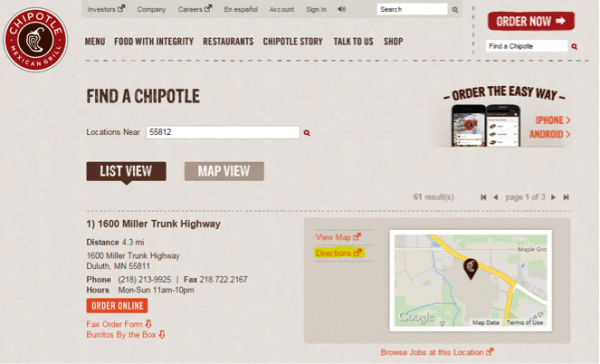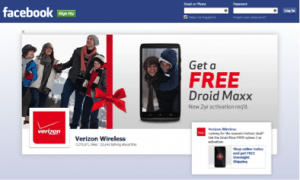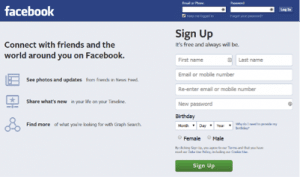“All roads lead to Rome… but make sure you’re tracking the right interactions when they get there.” -Geoffrey Chaucer. That’s how the saying goes, right? Sure.
If you could throw Chaucer through the Annie Cushing (famous Analytics Excel diva) filter, it would come out as follows, “After spending time, money, and creative effort on sending paid and organic traffic to your landing pages, make sure you’re capturing unique interactions and evaluating those activities in a meaningful manner.”
Google Analytics offers a lot of tools and resources to help analyze on-page interaction. One of the most robust tools in the Analytics shed is Event Tracking.
What it is
Event Tracking in Google Analytics is a method of tracking user interaction without a user going to another HTML page on your site (Google likes to call these “hits”). Essentially any interaction can now be captured and measured against or as a KPI. Not simply blog subscriptions, webinar signups, or hard conversions but soft conversions”interactions that are crucial to the end-user experience and crucial for your business to understand.
How it works
Step one is to ensure you have Google Analytics tracking set up on your website.
There are five specifications for each Event.
- Category (required) – The name for the group of Events you want to track.
- Action (required) – The unique action that defines the type of object interaction you want to track.
- Label (optional) – Available to define additional Action dimensions.
- Value (optional) – A value to provide numerical value for the Event.
- Non-interaction (optional) – A Boolean that, when set to true, indicates to Google that the Event hit will not be used for bounce rate calculation.
Next, determine a naming convention for your Events so that tracking and reporting the Events becomes clear and concise.
Example: Tracking the play/pause function on videos embedded in your website could look like this:
- Category- Videos
- Action- Play or Pause
- Label- ‘The Name of the Video’
The Category and Actions specifications would stay the same for each video, with the Label specification changing per video. This will make it easier to track the events in Google Analytics.
Here’s an example:
<a href=”javascript:void(0)” onClick=”ga(‘send’, ‘event’, { eventCategory: ‘CATEGORY’, eventAction: ‘ACTION’, eventLabel: ‘LABEL’, eventValue: VALUE});”>Login</a>
Once you’ve set these specifications, embed the method within the source code of the page object, video, etc. that you are tracking. Then watch the data pour in and analyze within the Behavior report in Google Analytics.
Analytics nerds, beware! As enticing as it may be to track every interaction possible, you are limited to 10 million Events per month. Make sure your Events are logically spaced and categorized so that you can collect relevant and meaningful data without exceeding your limit.
Google has some great guides to help you set up Event Tracking on the back end. Here are five marvelous and creative ways Event Tracking can be utilized to help tell your end user’s story.
- Scroll Depth
“ga(‘send’, ‘event’, { eventCategory: ‘ScrollDepth’, eventAction: ‘Scroll’, eventLabel: ‘90%’});”
Setting up Scroll Depth as an Event tracks the percentage of the page a user viewed in one page view. Spacing this Event out throughout your source code allows you to track users at different intervals.
Measure depth at 10%, 50%, and 90% then analyze additional engagement metrics for those users. Any patterns? Is there content at 50% that is assisting in additional page navigation or conversions? Are users reaching 90% and exiting? Do you need to bolster content at the bottom of the page to entice users to stay?
These are all valid questions that start with evaluating Scroll Depth. It may not mean much as a single data set, but analyze Scroll Depth against any number of metrics and your user experience can unfold before your eyes.
Advanced: Work with your developer to throw in a time variable and measure how long users are taking to scroll between Events. Faster than 10 seconds? Throw out their scroll data, that user simply scanned. Slower than 30 seconds, that user is buying what you’re selling!
- Embedded Maps – Driving Directions
“ga(‘send’, ‘event’, { eventCategory: ‘MapFunction’, eventAction: ‘DrivingDirections’, eventLabel: ‘Clicked’});”
Want another way to link online interaction to offline conversions? Set up Event Tracking on the embedded map on your contact page. When users request driving directions to your store, an Event is triggered. Find ways to measure how your users are reaching you offline and you’re one step closer to solving the online-offline attribution challenge.
Advanced: Have multiple stores? Make sure you’re attributing each Event to the corresponding location. Try altering your Event Label to reflect the difference: eventlabel:’Duluth’, eventlabel:’St. Paul’.
3. Soft Ecommerce Tracking
Ecommerce is a beast in the Analytics world. With checkout funnel metrics, shopping cart measurement, and actual sales tracking, adding any more data can be intimidating. However, Event Tracking can help shed some light on the not-so-obvious Ecommerce metrics. User reviews, sizing charts, return policy? Track it all.
When displaying product images, you want to strike the fine balance between intrigue and good lighting. Test which images work best for your product by tracking which images are selected most often. Save money on R&D and let the customer tell YOU which image is most appealing. Place the winner on the main product display page and generate that valuable interest.
“ga(‘send’, ‘event’, { eventCategory: ‘ProductImage’, eventAction: ‘SecondaryDisplay’, eventLabel: ‘Image3’});”
Advanced: Frequent complaints or a high number of returns on a certain product? Place Event Tracking on your size guide or washing instructions for that product. Determine if certain information needs to be made obvious to keep the customers’ expectations in check. The customer is always right, after all.
4. Outbound Link Tracking
Do you have social sharing enabled on your site? Track where users are exiting your site and entering your social channels. Is there a specific page or piece of content that entices more social engagement? If you’re capturing the outbound links, are those visits turning into likes, comments, or social shares?
“ga(‘send’, ‘event’, { eventCategory: ‘OutboundLinks’, eventAction: ‘Click’, eventLabel: ‘{{element url}}’});”
This data could demonstrate that an exit from your website may not mean an exit from your overall online presence.
This Event takes a little more finesse, however. You will want to make sure you set up a rule to exclude your own URL so that you’re only collecting external outbound links and not internal traffic.
Advanced: Part of the Google Display Network? Work with your developer to track affiliate links and learn which advertisers are benefitting from your content. Discover what outside content your customers find appealing and use that information to supplement your paid search strategy.
5. Testing
Test and track. Test and track. Test and track.
Want to explore the effect of placing a video on the homepage against blog subscriptions? Have your developer set up A/B testing that shows 50% of viewers the new video and 50% a static image, once new users hit the home page. Use Event Tracking to label the user as they hit the home page, Video User versus Image User.
To evaluate, look at Unique Visitors and Conversion Rate in Google Analytics, then segment using an Event Action (linked to your A/B testing code) to compare and contrast the behavior of the different home page experience. Confusing? Thank web heavens for developers, amirite?
Advanced: TEST EVERYTHING!
Event Tracking allows you to personalize your Google Analytics with the interactions that translate to your business KPIs. Don’t just look at page views, look at page depth! Don’t stop short of reading % Exit in the Behavior Flow, know where they went! And, above all else, gather meaningful data to validate testing. Event Tracking for testing is the nectar of the data Gods.
Are you using Event Tracking? What’s your most useful Event?
© diak – Fotolia














